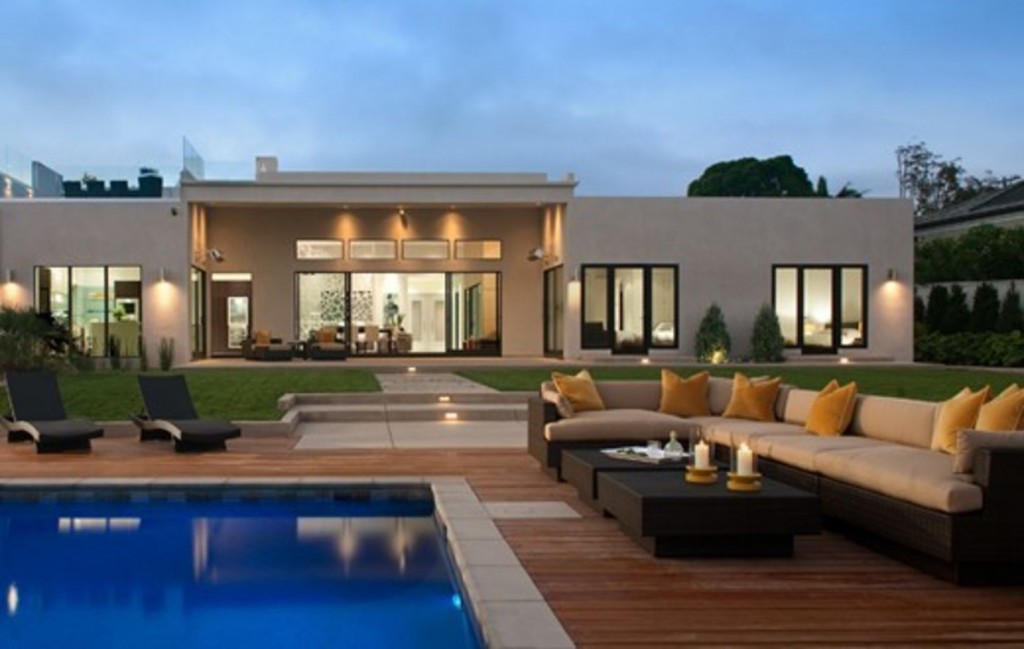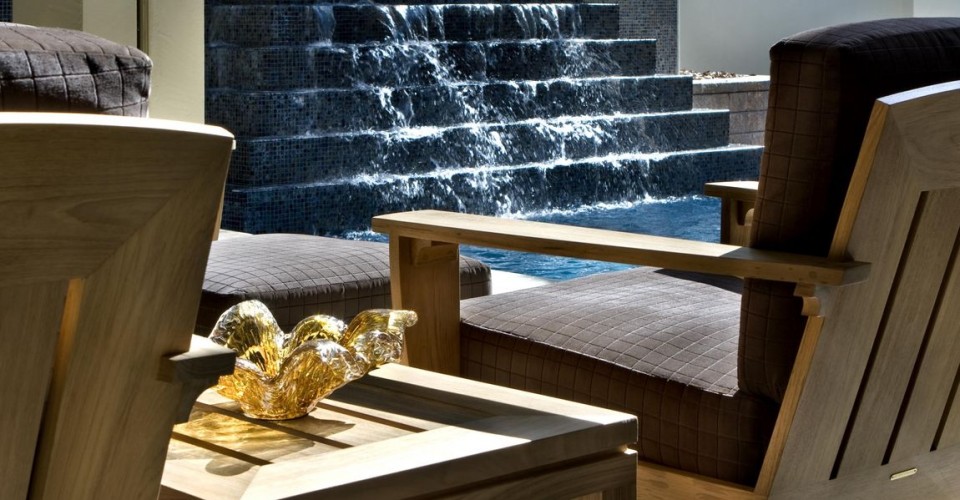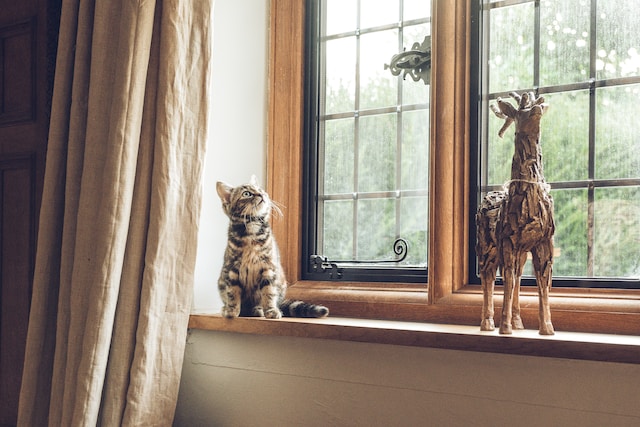Looking to purchase new outdoor cushions, awnings, umbrellas or other outdoor materials for this summer? There are a wide array of choices on the market and just like indoor fabrics, when it comes to buying outdoor fabrics you’ll want to understand how you will need it to perform. Let’s take a look at the basics for selecting outdoor fabrics and materials.
What do you need from your outdoor fabric?
Before you start looking at fabrics and cushions for your patio or deck, take a moment to assess what you want from your outdoor material. Do you plan on keeping this material outside all year or just for a few months out of the year? Will this material get wet a lot and need to be waterproof? The fabric you need for the occasional outdoor throw pillows may be very different from your outdoor umbrellas or awnings. Here are some typical differentiating factors between outdoor fabrics; many of these features should be listed directly on the tag of the material:
- fade resistant
- mold/mildew resistant
- waterproof
- weather resistant
- UV blockers
- stain resistent
- permeable or breathable
- machine washable or hand wash only

Be sure you read the label of your outdoor fabrics to ensure quality and durability. This outdoor living space was created by Dawson Design Group.
Types of outdoor fabrics and treatments
Understanding what type of material you are buying for your outdoor area is important. Outdoor fabrics and materials are offered in a wide variety of choices and can usually be organized by intended usage. If you are shopping at a store for cushions, for example, you’ll want to make sure it’s comfortable and resistant to fading. If these cushions will see a lot of spills and stains, you’ll want to make sure it’s easy to clean. Stores that sell outdoor cushions, tablecloths, awnings or umbrellas should be able to provide details as to the type of material used, its performance rating and cleaning instructions. Keep in mind that not all outdoor material is the same, and how the material is produced can determine how long it will last outdoors. Below you’ll see the most common types of material used in outdoor applications.
Solution-dyed acrylic: With solution-dyed acrylic, the fiber is first dyed with acrylic pigments before being turned into yarn and woven into cloth. By contrast, most fiber starts off colorless. The advantage of a solution-dyed acrylic material is that the color goes all the way through the material, making it less susceptible to fading, wear and tear, and in some cases, it can be resistant to bleaching. If sun fading is an issue for your outdoor (or even indoor) furniture, you’ll want to look for solution-dyed acrylic material.
Acrylic coated polyester: This type of material is commonly used for BBQ or grill covers, boat covers or shades, awnings and umbrellas because of it’s tough exterior and resistance to fading, mold and mildew. Acrylic is used to coat the exterior of a woven fabric, enabling it to withstand rubbing, tearing, poking as well as extreme weather like rain and sun. Some manufactures coat both sides with acrylic to make it extra durable and reversible.
Vinyl coated or vinyl coated synthetic fiber mesh: Vinyl (PVC) coating is flexible and durable, and when applied to a material it can create something that is strong, flexible and resistant to multiple elements like stains, sunlight, water and mildew. Some find vinyl easier to wipe clean, especially with difficult materials like tree sap or sunblock. Synthetic fiber mesh is the type of material you might see on a sling chair, where the material is thin yet flexible and strong. A vinyl coated material is easy to wipe down and keep clean but can feel plastic-y on your skin.
Acrylic versus vinyl: Acrylic tends to hold its color better, making it a good choice for areas where sun is strong. It’s also breathable compared to vinyl, and may not feel as hot to the touch. Because it is breathable, water may go through acrylic, so vinyl is better at keeping water off when used as an umbrella or awning. When torn, acrylic usually cannot be repaired as easily as vinyl.
Waterproof vs. water repellent vs. water resistant: Waterproof means that water cannot penetrate the surface, a waterproof fabric is impervious to water. Water repellent means that water can penetrate the surface, just not very easily. A water repellent material means that it has been treated so it will not be easily penetrated by water. Water resistant can be a material that has been treated to repel a certain amount of water but is generally less successful than a water repellent or waterproof material. Some materials have an external coating applied to it, making is water repellent or water resistant. Keep in mind that many of these coatings wear off over time, especially when washed in a machine or even dry cleaned. Make sure you read the label carefully and understand how best to care for this fabric.
Topical sprays and treatments: There are waterproofing sprays like Scotchgard or NeverWet that can be applied directly to your outdoor fabrics to make them more water repellent (and sometimes stain resistant). Many of these sprays are designed to be applied easily to objects that are subject to water like cushions or seating. These topical applications wear off over time so you may need to reapply at a later date.
Canvas and duck cloth: Canvas was traditionally made from hemp or linen, which are both naturally durable and easy to source. Nowadays canvas is typically made from cotton; it is a thick, heavy duty cloth that is strong and durable. Unless treated, it is not naturally stain, water or mildew resistant and may need to be treated. Duck cloth or cotton duck (from the Dutch doek meaning “linen canvas”) is similar to canvas but much more tightly woven.
Oil cloth: Oil cloth is generally referred to canvas that has been coated with linseed oil to make it impervious to water. Traditionally, leather was used for objects that needed to be durable, flexible and water repellent, like luggage, carriages, or other outdoor cloth. But leather was expensive and could be damaged by too much water. Boiled linseed oil was an easy way to transform cotton canvas into something more weatherproof. Waxed cotton was another version of this durable material and was used in clothing like overcoats. Nowadays oil cloth is usually a vinyl treated material offered in various thicknesses and used for outdoor tablecloths or place mats.
Sunbrella: Sunbrella is a brand that has been at the forefront of outdoor materials and high performance fabric since 1961. We decided to list it here as a separate item because like many established brands, people often refer to all outdoor fabric as Sunbrella when in fact it is a brand. You can find their materials at numerous locations online and in stores and some manufacturers choose to use Sunbrella in the making of their products. They began their business by producing material for awnings. Since then, they’ve established themselves as a leader in performance fabric – fabric that performs well outside as well as inside. They have a wide range of colors, textures and patterns for the outdoor space, including marine quality fabrics. Interior designers often turn to Sunbrella when needing high performance fabric for indoor use (for example kids’ rooms, family rooms or rec rooms). You can purchase Sunbrella fabric here.
Top image credit: Phil Kean Design
When you make a purchase using affiliate links on our site, we may earn a commission.




